Two decades ago, most Geelong residents went about their business as they would any other Boxing Day.
Spending time with loved ones, shopping, watching the cricket.
Then harrowing news started coming in from Asia.
A magnitude 9.2 earthquake just off the coast of Sumatra just before 12pm AEST, triggering a massive tsunami with waves up to 30m high.
It devastated the region, killing almost 230,000 people and displacing, injuring and impacting countless more.
The Boxing Day tsunami changed the world.
But how did Geelong see it?
PANDEMONIUM IN PENANG
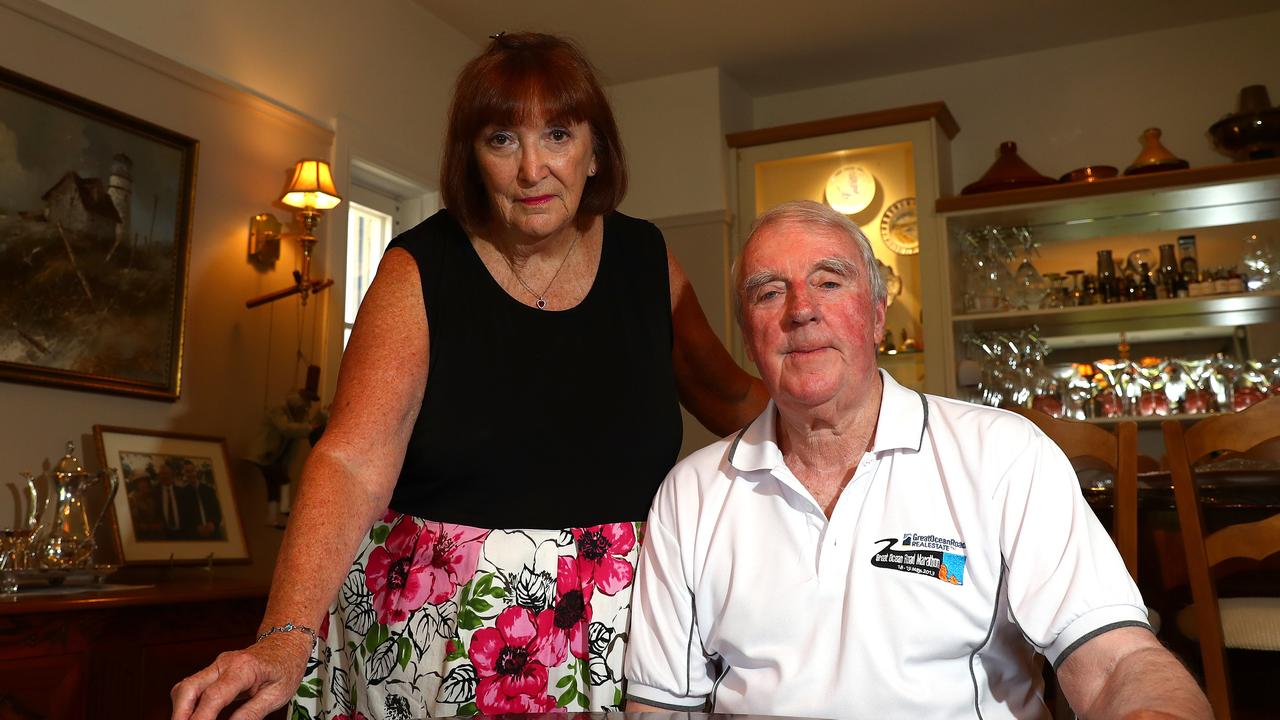
When the tsunami hit, Geelong author John Craven was none the wiser, despite being in Malaysia at the time.
A regular traveller to Penang, located on the northwest coast, Mr Craven’s ties to the Geelong Racing Club had linked him up with people at the local racecourse.
As Mr Craven got ready to leave for the Penang Cup on Boxing Day morning, his wife, Bernadette, complained that the building was shaking.
“Big brave me said ‘no, it’s not, it’s just the airconditioning making a noise’,” Mr Craven said.
The couple headed off to Penang Turf Club, inland from the beachside resort where they were staying.
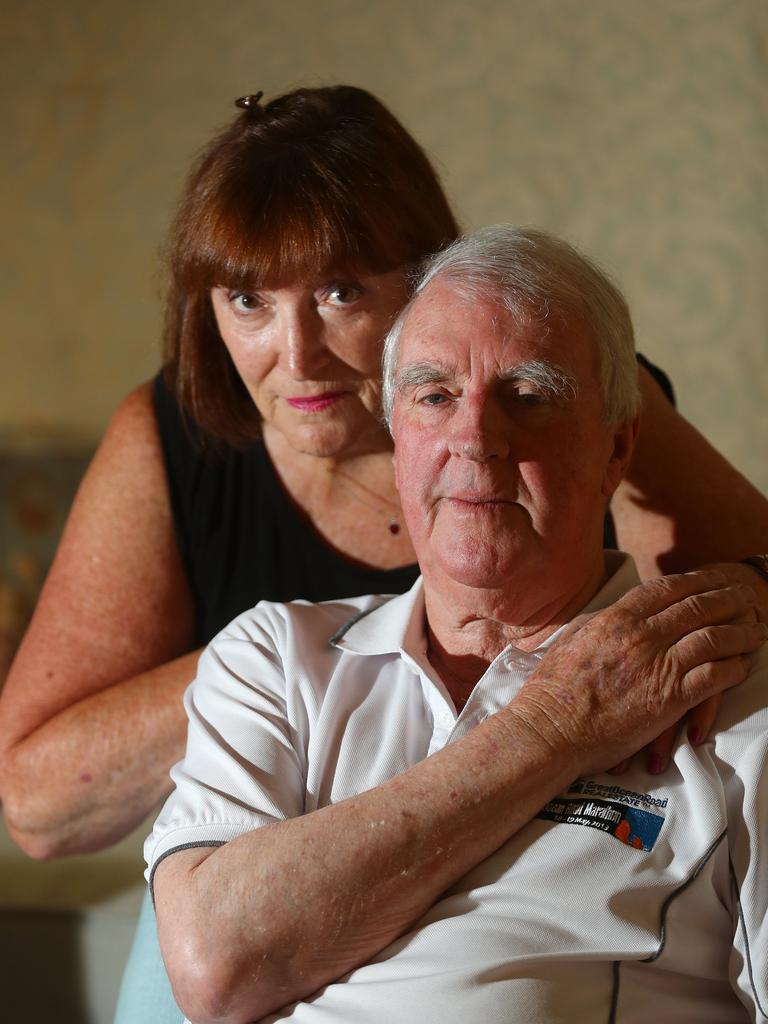
“We picked up some friends on the way and got to the races,” Mr Craven said.
“Somebody ran up to one of our friends and said there’s a lot of water in the foyer we were staying.
“No one at the races knew what was going on in the rest of Asia, we were totally oblivious to it.”
It wasn’t until their cab driver took an unusual route back to their hotel in Batu Ferringhi that Mr Craven began to feel as though something was wrong.
A grim sight then brought home the gravity of the situation.
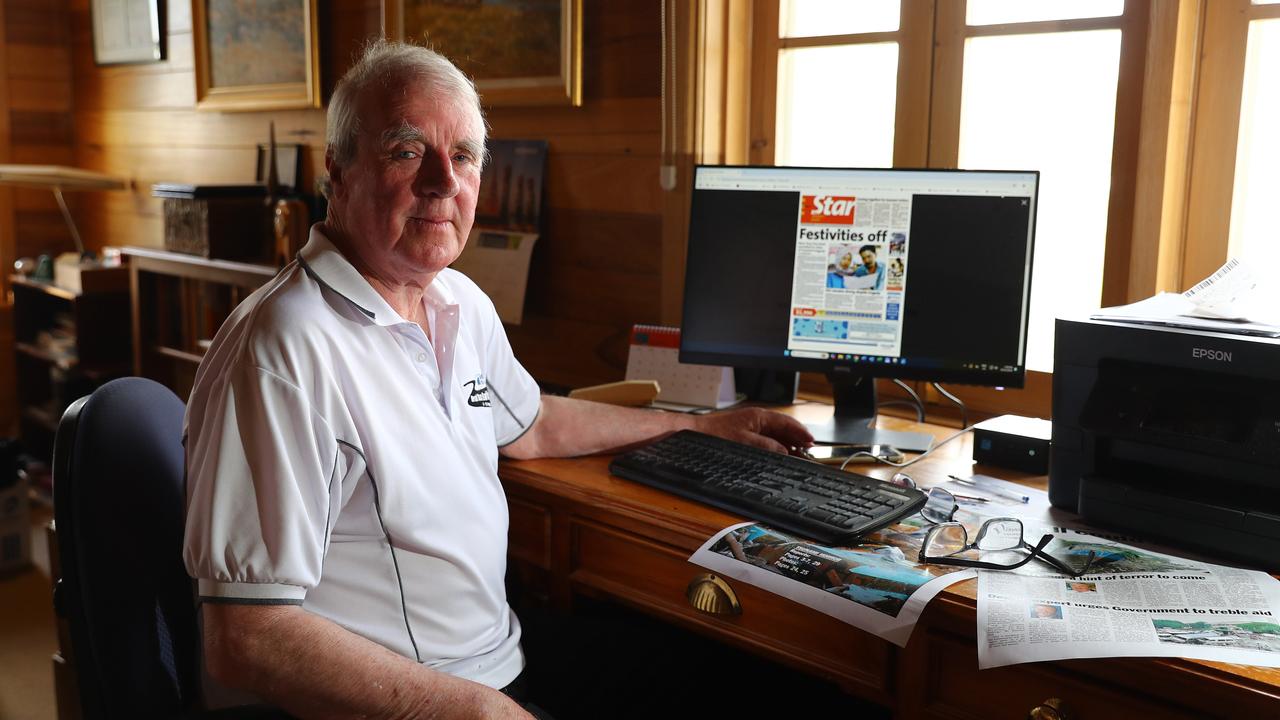
“I looked out the cab window and laid down in a line were a lot of sheets,” he said.
“I asked the cab driver what they were and he said ‘bodies, they drowned,’ and I just thought, ‘what’s bloody going on here’.”
The hotel the Cravens were staying at was hit “severely,” but the extent of the damage wouldn’t reveal itself until the following day.
“The next morning we were woken up very, very early by helicopters flying overhead,” he said.
“I looked down and they were doing a body collection on the beach.
“I think they picked up 70 bodies or something like that.”
The full scope of what had happened across the continent became clearer when Mr Craven turned on the television.
“Penang got hit pretty badly, but nothing like other places where they lost 80,000 people,” he said.
“We decided to stay and see what we could do.”
The front page of a local newspaper struck the pair.
On it was a local couple who had lost five of their seven children who were swimming in the ocean when the waves started to hit.
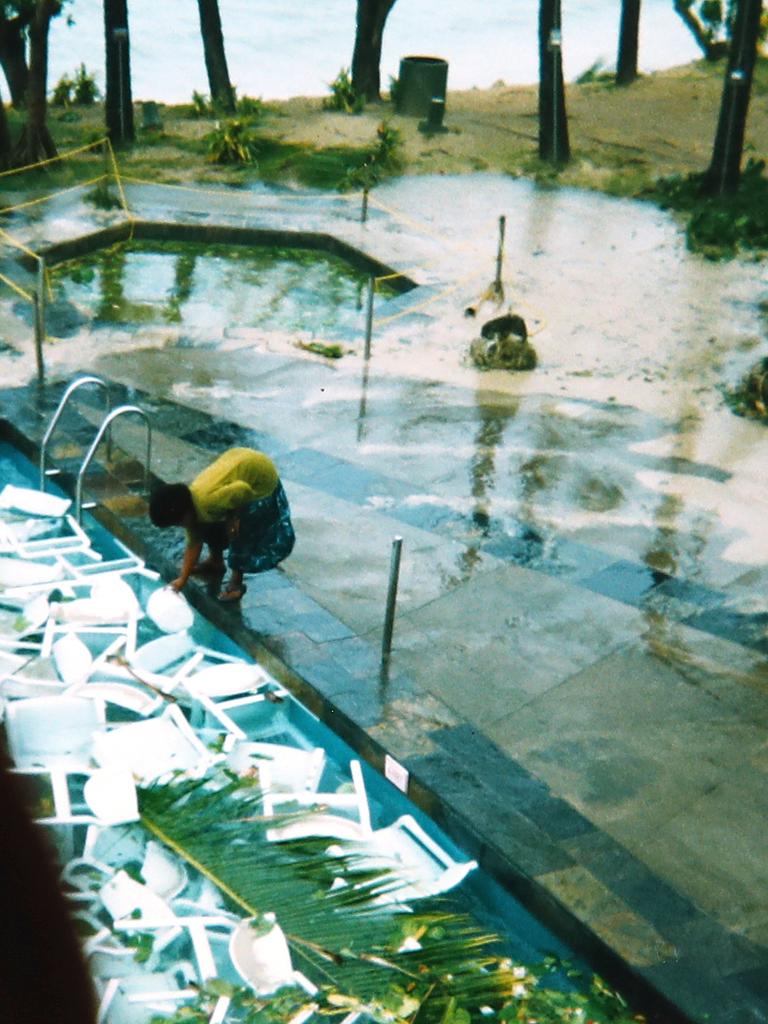
“The whole family were in the water and five of them drowned,” Mr Craven said.
“It occurred to us that we should at least help somebody, so we rang up the newspaper and said we wanted to donate some money to them.”
A journalist and a photographer helped find the family for the Cravens.
“We went up and tried to express our condolences or sympathies with these people,” Mr Craven said.
“We just tried to give them some comfort, my wife’s very good at that sort of thing.
“I was sort of semi-speechless, what do you say to a bloke who’s just lost five children?”
Mr Craven said the couple’s mood was subdued in the days after and they decided not to attend New Year’s Eve festivities at the hotel.
“We just stayed, we felt we shouldn’t desert the place, the government was saying they need the tourists more than ever,” he said.
“But it wasn’t our usual, happy, wonderful holiday, and it was just something you would never, ever dream of.”
The couple regularly returned to Penang up until the Covid pandemic.
PICTURES FROM PHUKET
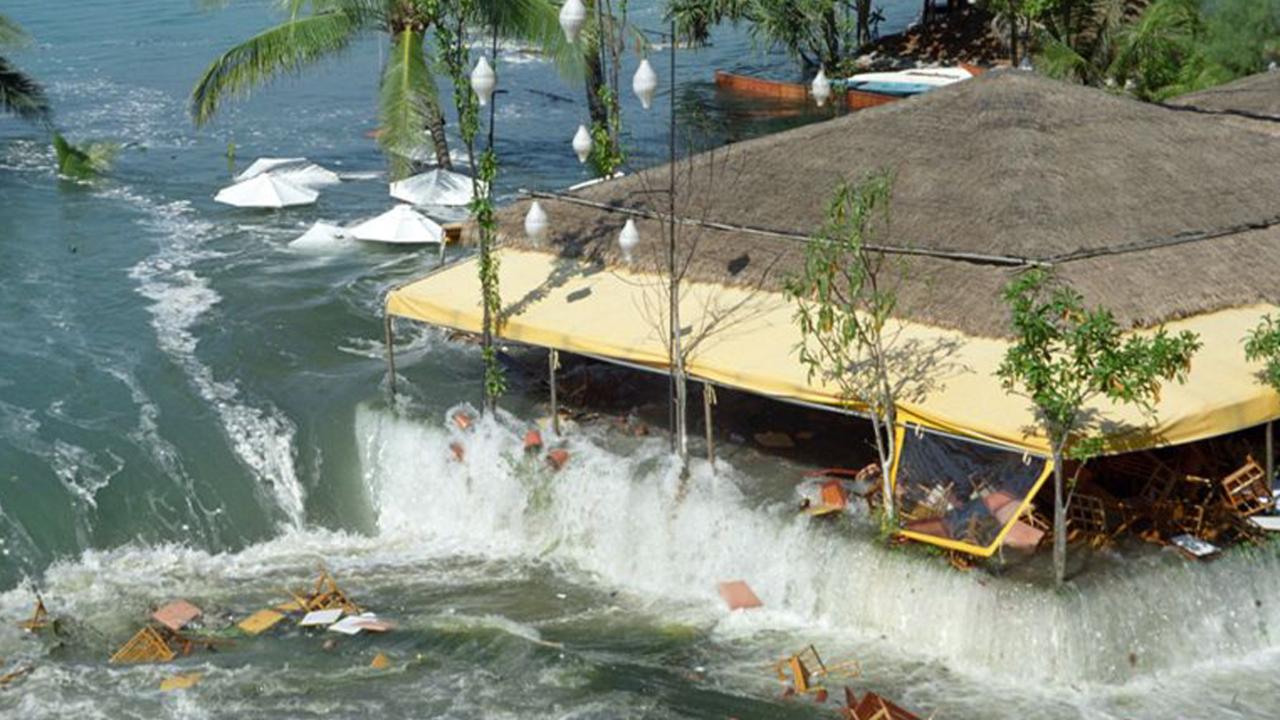
Joanne Davis, son of Cats legend Bob, was holidaying in Phuket, the usually idyllic Thai island 830km south of Bangkok.
She was wading in the water on Boxing Day morning, but was back at her hotel when the waves began to hit.
“I think I can still see myself there,” Ms Davis said.
“The most extraordinary thing was when the water and the ocean completely disappeared, so from where I was, all of a sudden, instead of an ocean, it was just the earth’s surface.
“But then it (the water) came in with such a rush that it was frightening.
“I think we were all stunned.”
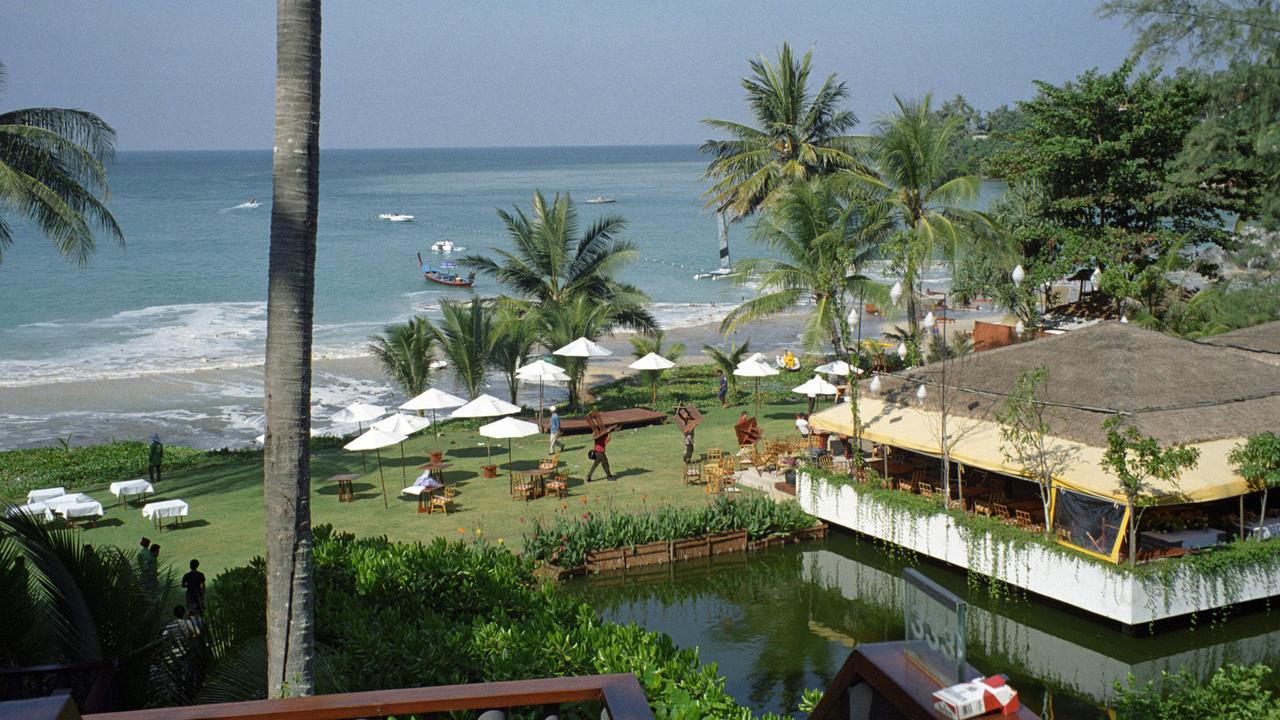
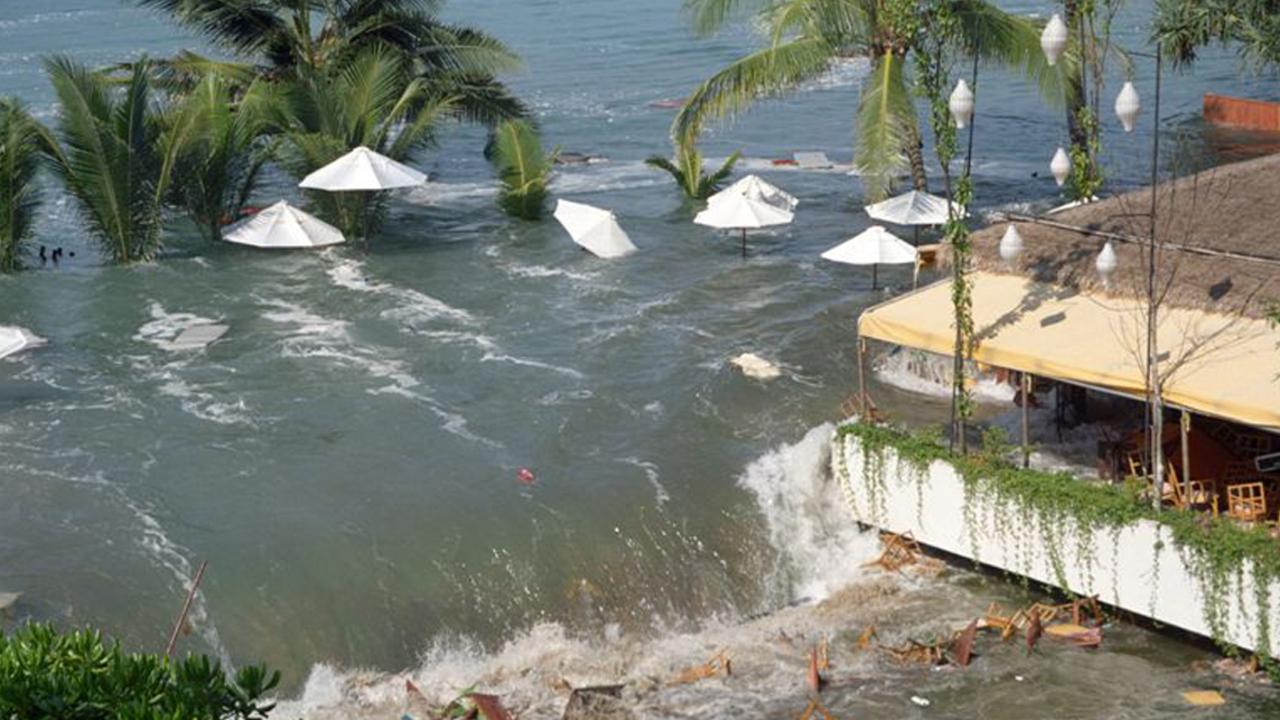
Ms Davis had the presence of mind to grab her camera she had been using for “happy snaps” and capture the waves crashing into the shore from the balcony of her hotel.
“I had a little old trusty Canon,” she said.
“I was just very lucky, as I’m not a photographer.
“The camera wasn’t far away when the first wave came in.”
Ms Davis said she felt lucky the area she was in wasn’t as badly affected as others.
“I’m fortunate that I was purely a witness,” she said.
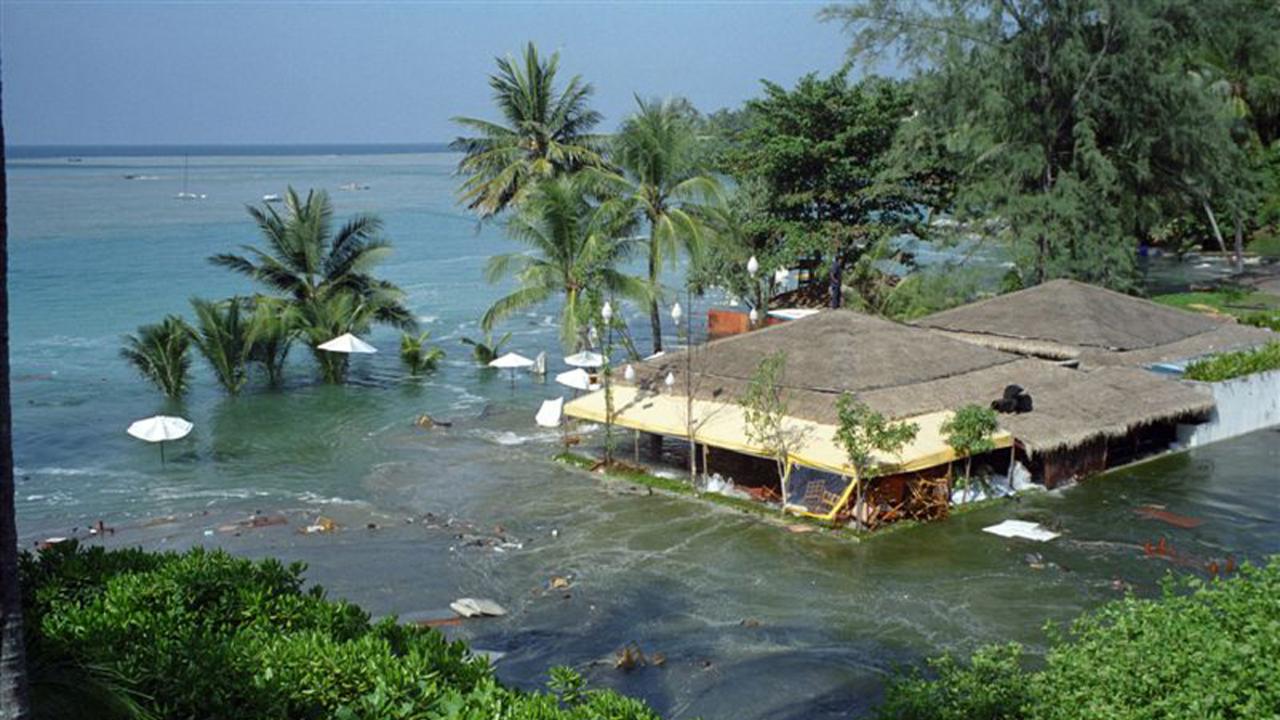
“Because I was staying in Phuket, we didn’t have any loss of life, it very much depended where you were on the coastline.”
Ms Davis boarded her scheduled flight to Hong Kong the next day.
It was only there when, like Mr Craven, news reports revealed the gravity of what had happened.
“It wasn’t until I got back that you could really follow the coverage properly,” Ms Davis said.
“I think I probably said a catholic prayer.”
Ms Davis told the Addy at the time that the event had changed her life, and now, two decades later, she echoed that statement.
“I sort of realised how fragile everything is,” she said.
BACK HOME
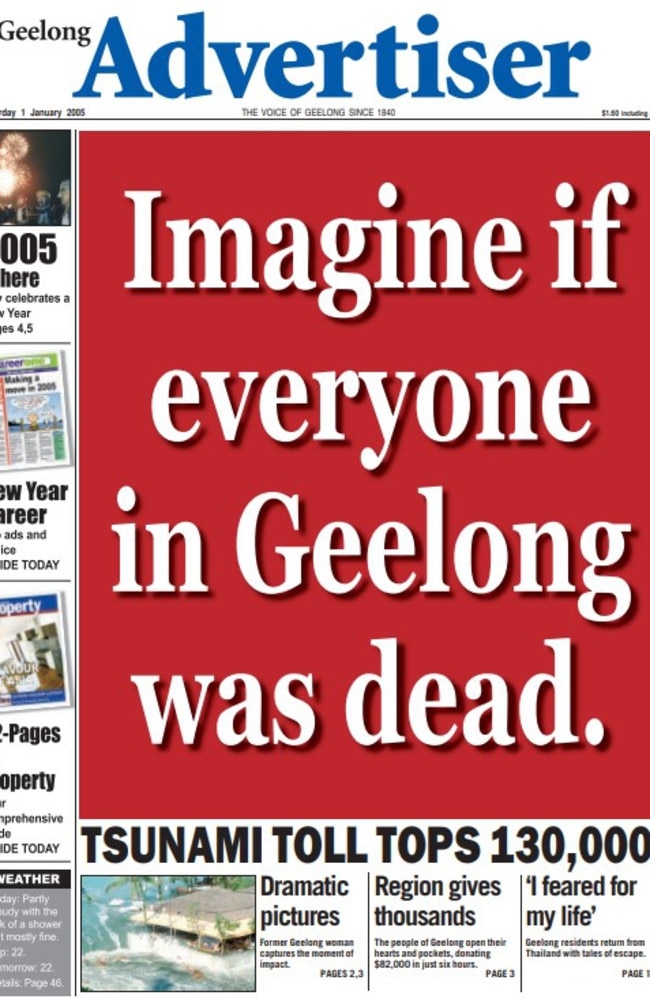
The tsunami was the biggest news story in Geelong – and the world – for at least a week.
The Geelong Advertiser ran seven consecutive front pages, with a range of stories filling each edition.
Some were grim, some were personal, some were heart breaking, and some, just some, were hopeful.
The spectre that looms over these seven editions upon revisiting is the growing death toll.
At one point readers are warned the death toll could reach above 30,000 – the final number would be almost eight times that.
The rising death toll led to a striking New Year’s Day front page that carried the headline: “Imagine if everyone in Geelong was dead”.
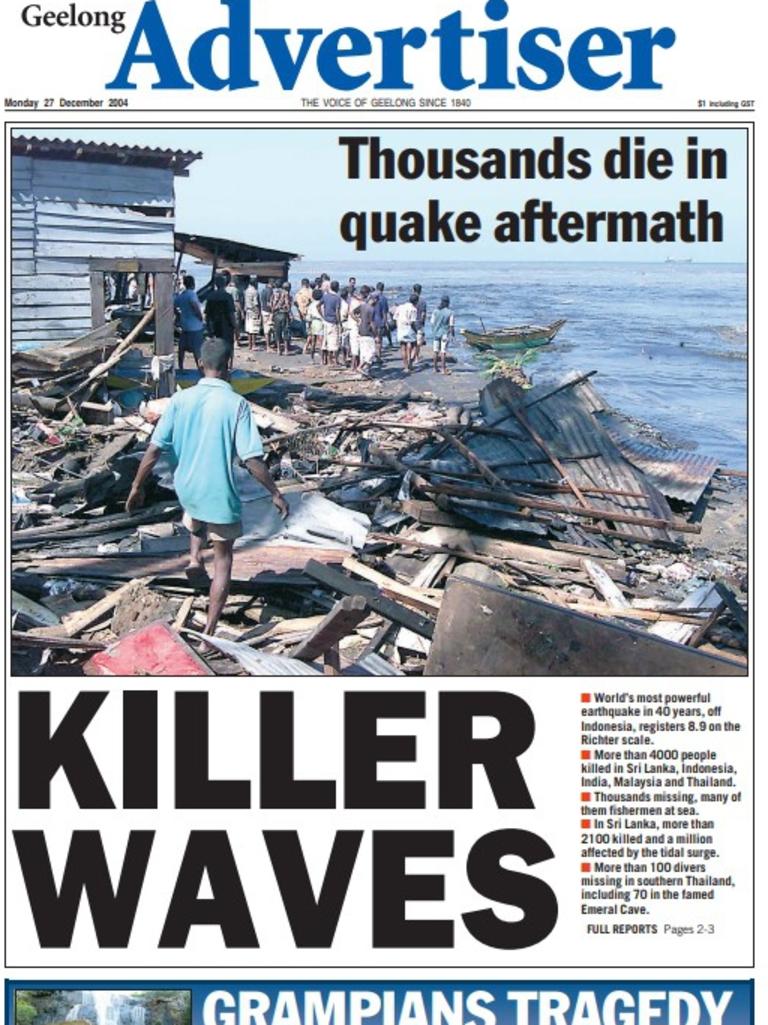
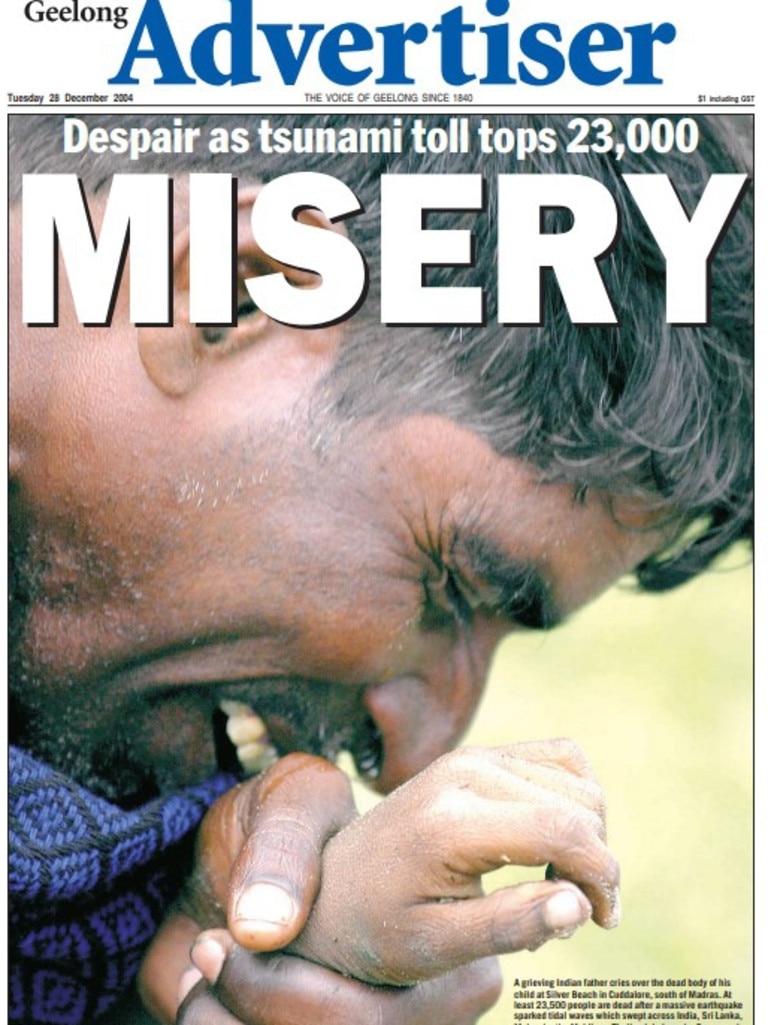
The Addy’s Shaun Viljoen was a young sub-editor in 2004.
“When you work in a newsroom, you see so many significant events, but the tsunami was one of those ‘where were you when it happened?’ moments,” he said.
“The Addy is a local newspaper but sometimes a global event is just so huge that it takes centre stage – what happened on Boxing Day 2004 was one of those.
“I remember being in the newsroom as the first murmurings of something big started coming through, this was before everyone had a phone with a camera in their pocket, before social media, so we relied on wire services and TV news coverage.”
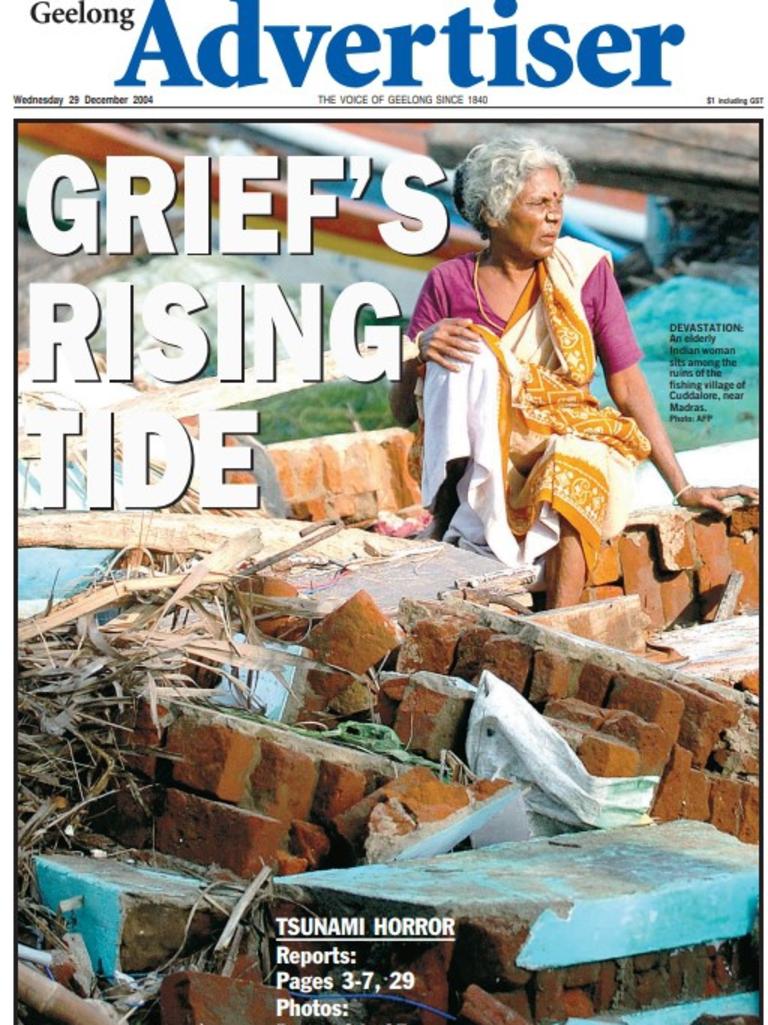

He said as reports and images started to emerge it became apparent it was a significant event, but they had no idea at that point just how big it would be.
“In the hours and days that followed we began to see the almost incomprehensible scale of the disaster and the massive loss of life, I think our front pages through that week really demonstrate that,” Mr Viljoen said.
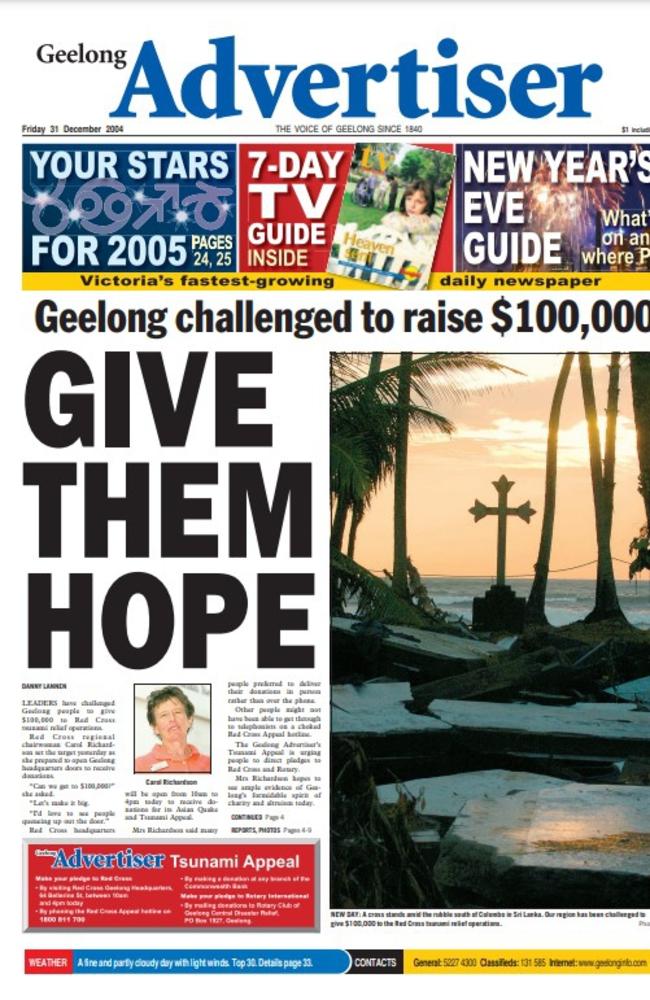
“And then in contrast to these numbers, which were so big it was hard to get your head around, we had all these personal tales and incredible images that really brought home the very human nature of the tragedy.”

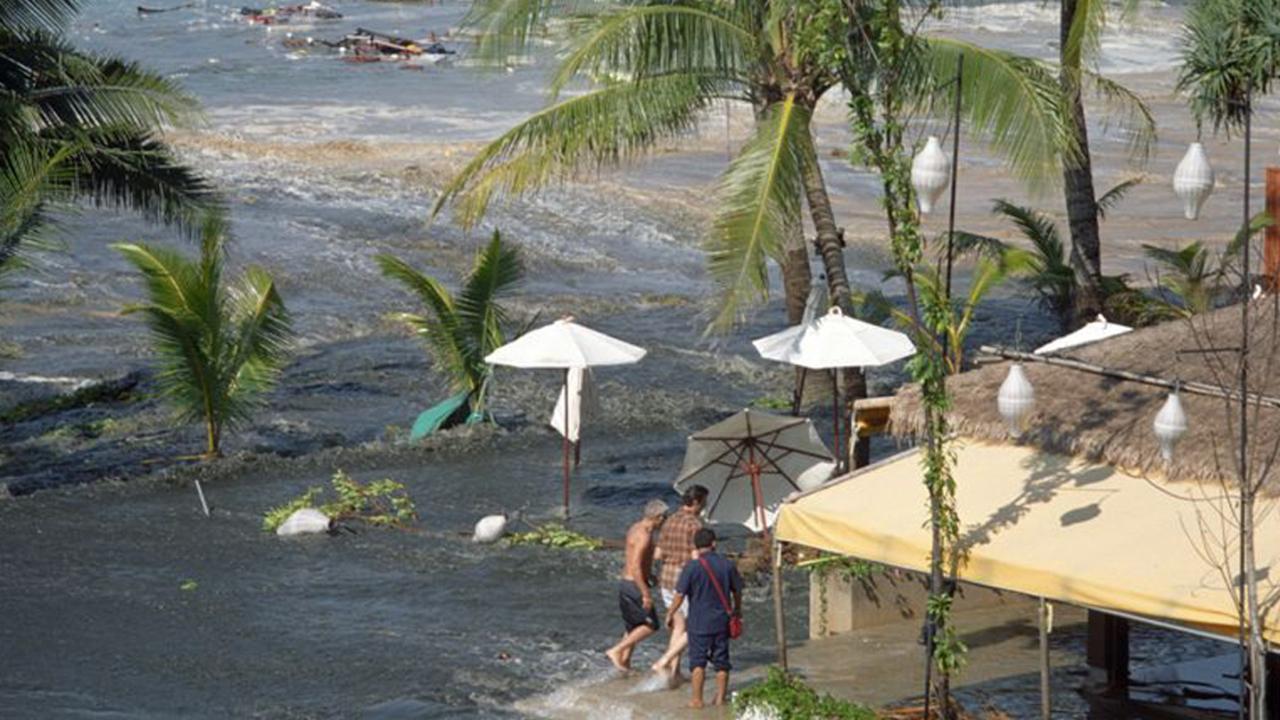

Add your comment to this story
To join the conversation, please log in. Don't have an account? Register
Join the conversation, you are commenting as Logout
Emerging Geelong star reflects on breakout national champs
Bailey Sykes announced himself on the national stage and claimed a stunning haul. He opens up on being part of the winning Victorian side and his hopes for the future.
‘Australia Day icon’: Big idea floated for Christmas tree
A waterski stunt show, fireworks, street parade, aerobatic display, and outdoor concert are all ideas being suggested for Australia Day in Geelong. But could our “much-loved” floating Christmas tree steal the show?